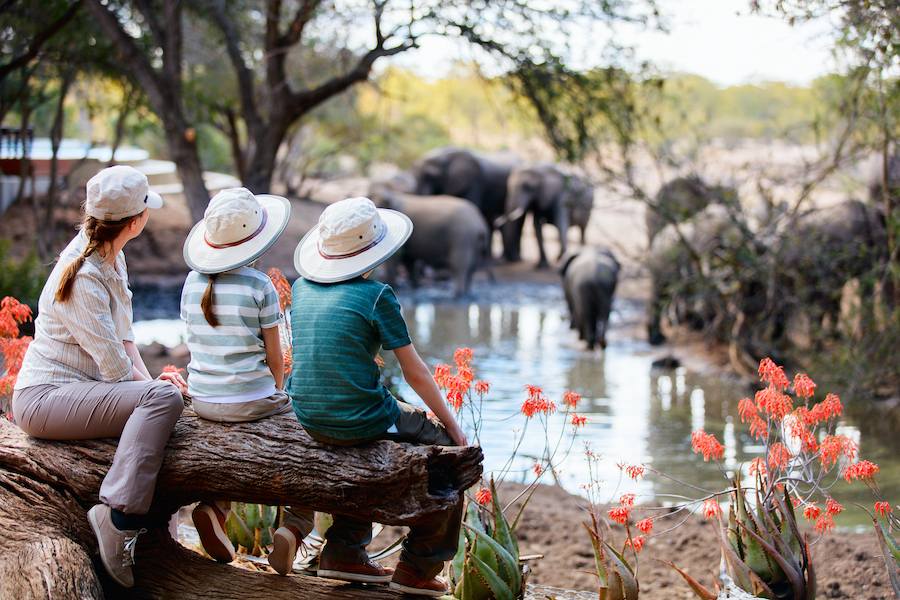They say that you never get a second chance to make a first impression. And more often than not, the initial encounter a visitor will have with your tour brand will be online. And this is where tourism content writing can help to communicate the type of experience guests can expect from you.
With insightful content and visuals, you’re better able to attract travelers to your tours and activities, even before they’re ready to buy. In fact, some of the best content is a mix of being educational, with a dash of expertise and entertainment — all wrapped up in one post.
Building your tour brand won’t happen overnight, but with a handle on what your audience wants to see and contributing regularly, you’ll outpace competitors with increased visibility .
What is tourism content writing
For many experience providers, coming up with travel-related content can tumble down the list of priorities. Tourism-content writing is centred on storytelling, where as an experience provider, you share content designed to give the reader a better sense of what you offer.
Ultimately, producing content that’s both entertaining and helpful can increase brand awareness, foster trust and improve conversion rates among website visitors.
Writing travel industry content isn’t something that comes easily to most experience providers. And even if you consider yourself an expert in your field, it can be tough figuring out what to write about.
Keeping in mind that more travelers are looking to book with companies they believe align with their values. All the more reason to position your tourism content writing front and centre, to articulate your unique selling proposition (USP).
While there are many benefits to creating content, some of the strongest reasons are establishing your tour brand as a reputable and trustworthy company.

Aim to be empathetic and helpful
Imagining yourself in the mind of your reader puts you into an empathetic and helpful frame of mind, which will help your thoughts flow more clearly.
As the expert in your business, you can lean on guest comments and questions to help guide the type of travel content you want to share.
Picture yourself answering a question from a guest in real life, in how you’re more inclined to be both empathetic and informative in your response. And you may find that once you start brainstorming ideas, you’ll notice more come to mind.
Brainstorm ideas
When you start thinking about the best travel to write, begin by asking yourself, “if I were someone who knew nothing about this destination, what could I learn from reading this blog or social media post?”
Imagine yourself in the reader’s shoes by answering, “if I was deciding between two different travel options would I be more inclined or swayed to try this experience?” and build on the how and why someone might feel this way.
For instance, you could showcase what goes into preparing for guests or how you decide on certain landmarks to include in your sightseeing tours. Or perhaps writing a post about the most efficient route to get to your destination and sharing recommended methods of travel.
Another idea might be providing a packing list for a weeklong stay at your resort which also offers on-site kayaking and paddle board rentals. By giving your audience a sneak peek of what you offer, you incentivize them to learn more.
Focus on squashing fears
When tour guests arrive onsite, it will likely be the first time the get to try out this particular tour or activity. Before they decide to book, there’s bound to be some fear of the unknown, and as an expert in the tourism industry, you can quell some of their concerns.
Use this insight to power your content creation, aiming to answer questions future guests might have. Describe what visitors can expect from your experiences, how to prepare along with ways they can make the most of their travels.
Once you address some of the roadblocks travelers might have through your travel-related content, you cultivate a sense of trust among your audience.
Keep your writing short and to the point
When writing blog posts, use plenty of headers, lists and images to break up large bodies of text. Short, snappy sentences encourage the reader to keep reading.
As you draft a few potential topics, focus on listing key points instead of reaching a specific word count. Start with an outline or a few sentences detailing what the post will uncover and build from there.
Organize your travel content
When you start writing tourism content, try to group trains of thought, to make your posts easier to scan. Anticipate what prospective guests might be looking for and be proactive in addressing their questions.
Travelers value the inherent knowledge you have as a tour operator, but it’s important to share in a cohesive and easy-to-follow method.

Why produce travel content
When travelers start to research their next trip, they’re more inclined to trust a company that answers their questions. With travel content, you can provide detailed accounts of experiences which help to paint a picture in your audience’s mind.
Fortunately, past guests be one of your most valuable outlets for information prospective guests are curious about. Plus, you have a wealth of knowledge and can use this to benefit your audience.
Thankfully, you don’t need to limit your content efforts to writing alone. Videos and photos can lead the way with cultivating inspiring travel ideas.
Consider capturing or sources a few different visuals to inspire the written content you’ll share with each photo or video.
Examples of travel-related content
- Blogs
- Brochures
- Detailed social media posts
- Images
- How-to guides
- Travel guides
- Podcasts
- Videos
When you start creating and writing tourism content, know that the main purpose of content marketing is to build trust for your brand, become the go-to resource in your destination for travel advice and share helpful tips with your audience.
When to expect results in tourism content writing
Understandably, some tour operators expect content to drive conversions immediately. But this isn’t the way it works.
Content marketing is all about the long game. It can take some time to deliver the type of content your audience wants to see. And when it comes to travelers, answering questions is a compelling tactic for using keywords that match users search intent online.
Don’t be discouraged if you don’t spot big spikes in bookings right away and by right away we mean within 1-3 months. The effort can absolutely be worth the time investment.
Consider writing tourism content to be like kneading bread dough before setting it to rise. With a few ingredients, the right measurements and a bit of patience, you’ll be well-equipped to see results.
For instance, if you put yeast with hot water, flour and salt in the oven before stirring and leaving the mixture to rise overnight, you’ll be left with some pretty sad-looking bread dough.
And if instead, you use warm water and the right amount of yeast, allowing the mixture to bubble before mixing in with the flour and salt, you’re much more likely to enjoy a delicious loaf of bread.
While you probably didn’t come here to learn how to make bread, you can see the parallels with tourism content writing.
As author Zeeshan Ahmed shares, “Never give up, great things take time.” Much like bakers, writers know that the secret to quality content is consistency and patience for beautiful results.

How to start writing tourism content
Providing your audience with travel-related content addresses the what’s-in-it-for-me (WIIFM) mentality shared by guests and site visitors, alike. With a tour operator blog, your goal should be to provide additional value before asking your site visitors to buy from you.
As a natural storyteller, you’ll likely have a wealth of ideas to draw upon. The biggest challenge you’ll face is in carving out the time to create the kind of content you know travelers will appreciate.Getting started with regular blogging and content production is likely your biggest challenge, so follow these steps to get the roadblocks out of your way.
Allocate 1-2 hours per week to brainstorm topics
The thing about stories is that they’re so much more relatable than facts alone — and even better if you can share funny accounts of things that have happened.
But in order to put your stories to paper, you need to set aside time in your schedule to make it happen. I recommend choosing a specific day or time of day that can be uninterrupted brainstorming time.
The best part? You don’t have to do it all at once. Spending 15-20 minutes at a time will make a difference in pulling travel-related content out of your head.
Be consistent with creating tourism content
While it can take some time to develop your brand voice and how you approach writing tourism content, your blog and social posts should be on a consistent schedule.
Aim to look ahead and plan out your content for each quarter. Knowing that once your busy season starts, you may not be able to dedicate as much time to creating new travel-related content. But coming up with ideas and acting on them are two different components of building out your content library.
Document ideas as they come to mind
Instead of trying to come up with brilliant content on a daily basis, build momentum with a few easy steps.
Genuine content that clicks with customers will come from real-life experiences. And whether it’s from the guest standpoint or your own, as a tour operator, both perspectives can help you to connect with your audience.
Share photos and videos of guests (with permission) and scenery
As powerful as words alone can be, you’ll be more persuasive by adding photos to your content mix.
While you don’t need to be a professional photographer, quality photos can speak volumes to your audience and help cultivate ideas for writing the best travel content for your tour business.
In addition, photos showcasing a variety of age groups and traveler dynamics will help you show up as being more inclusive to guests considering your tour brand.
Your audience wants you to create valuable content, answer questions and entertain them, because we all love share-worthy travel photos and posts!
Write down questions you receive from guests
By getting into the habit of writing and creating content, you’ll eventually have a library of ideas and images to pull from.
Rather than starting from scratch, look back on emails and interactions you’ve had with guests to see if themes keep popping up. You can often find a range of ideas to write about just by re-visiting the questions that come up amongst your guests.
Wrapping it travel-related content up with a call-to-action
Ensure that readers know what to do next, after reading a post or an article. Let them know that they can book online, learn more or subscribe for ongoing updates.
If it feels too simple, you’re probably doing a great job communicating to readers the next steps for them to take.
Where to find the best travel-related topics
When searching for what to write about, start with questions you’ve gotten from customers in the past. Lean on your competitors for ideas — not to copy them— but to gain a sense of the tourism content they believe works for their audience.
You can also try searching for keywords related to the experiences you offer including the specific activity or tour type along with your location. As you search to see what else pops up, scroll to the “people also ask” section of the results to see what else people are looking for with similar search terms.
Fortunately, travel-related content generates brand awareness and nurtures an audience. As a result, your tour brand will come to mind first once someone is ready to travel to their destination and book.
Final thoughts
Sure, tourism content writing can be a big hill to climb — at first. But it can be the one strategy that sets you apart from your competitors and expands your reach.
And, as you continue to improve your writing, ask yourself questions like, “so what” and whether this information could be sourced easily with a quick Google search.
When it comes to writing the best travel content, aim to bucket your information into a few categories to make the process easier. It’s a marathon, and not a sprint, and with a dedicated effort, you’ll be able to enjoy the satisfaction that comes from investing in your tour business.
Seeking more ways to connect with your audience online?

Subscribe to the Checkfront Newsletter
Read new tips on how to get more bookings every month.



